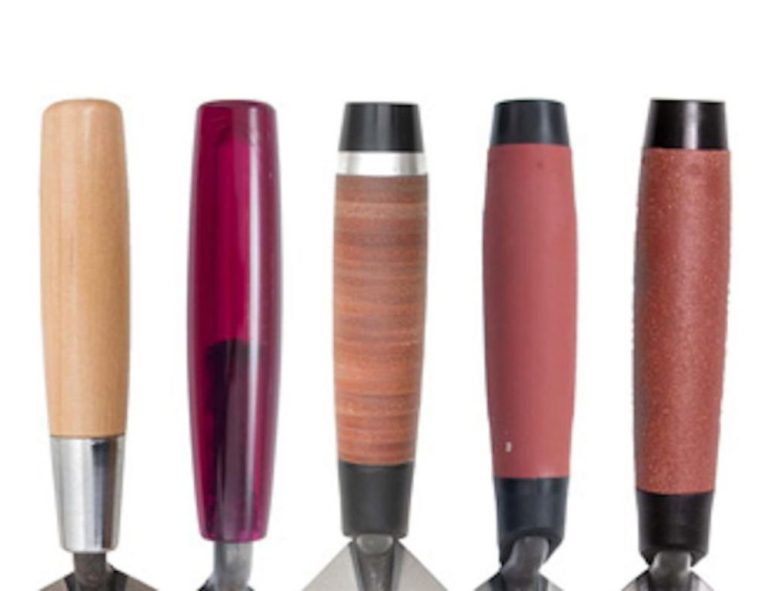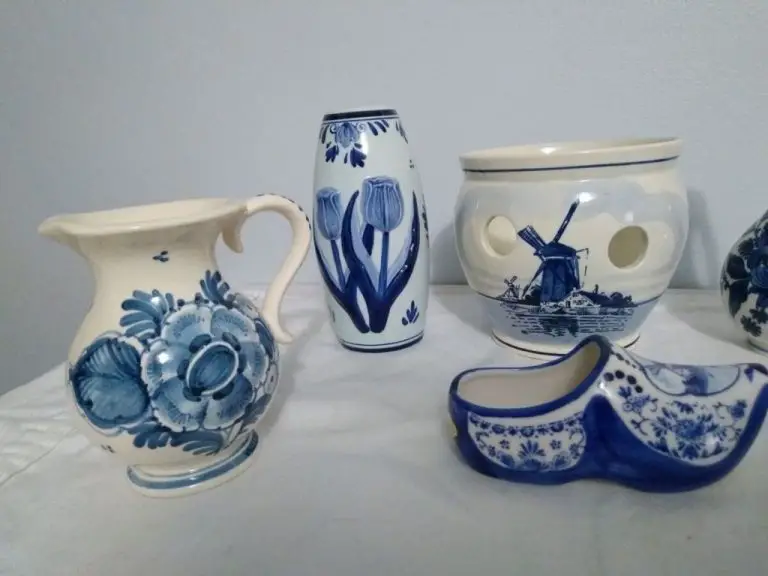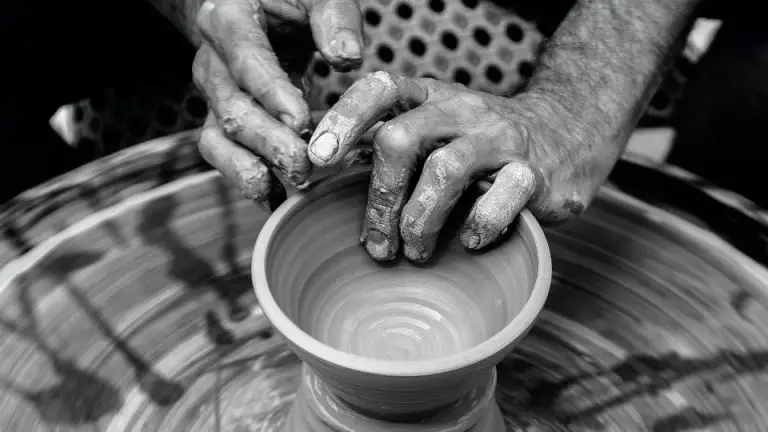Can You Use Air-Dry Clay On Dolls?
What is Air-Dry Clay?
Air-dry clay, also called modeling clay or self-hardening clay, is a type of clay that dries and hardens at room temperature without the need for baking or firing. It contains various ingredients and additives that cause it to harden once exposed to air.
The main ingredients in air-dry clay are water and natural clays or minerals like kaolin, bentonite, or amorphous silica. Most air-dry clays also contain fillers like sawdust, paper, or cellulose to improve texture and hold shape. Other additives like oils, starches, and sodium silicate help control drying and reduce cracking.
Unlike polymer clays that require baking to harden, air-dry clays cure at room temperature through evaporation as the water content in the clay slowly evaporates over a day or two. This makes air-dry clays very convenient and accessible for crafting, as no oven or kiln is required. The finished pieces will be solid and durable, though more fragile than if fired at a high temperature.
Compared to pottery clays that require firing at extreme heat, air-dry clays are much easier to work with, less messy, and do not shrink or crack as severely during drying. Their finished appearance can range from smooth to slightly rough depending on the clay body. They are ideal for detailed sculptures, dolls, decorative pieces, and craft projects.
Benefits of Using Air-Dry Clay on Dolls
Air-dry clay offers a number of advantages for doll making and crafting. Here are some of the key benefits of using air-dry clay on dolls:
Air-dry clay is a lightweight and durable material. Once fully cured and dry, pieces made from air-dry clay are solid and sturdy. This makes clay ideal for modeling dolls, doll parts, clothing, accessories and more. The finished clay pieces will be lightweight enough for playing and durable enough for repeated handling.
Air-dry clay is easy to mold and shape by hand. It has a smooth, malleable texture that lends itself well to sculpting by hand without the need for any special tools. Shaping and smoothing pieces is easy during the working time before the clay dries. This allows for flexibility and creativity when designing dolls out of clay.
When properly dried, air-dry clay hardens with a nice smooth, solid finish. The clay dries hard, while still retaining some flexibility so pieces don’t easily break. The smooth surface gives doll makers a great starting point for applying decorative finishes like paint, varnish, stains, etc. The hardness allows details to remain crisp and defined.
Challenges of Using Air-Dry Clay on Dolls
While air-dry clay offers many benefits for doll making, it also comes with some unique challenges to be aware of. Here are some of the main difficulties you may encounter when working with air-dry clay dolls:
Can be brittle if thinly rolled – One downside of air-dry clay is that it can become quite brittle and prone to cracking if rolled too thin. It’s important to maintain a certain thickness when manipulating the clay, especially for delicate areas like arms, legs, and necks which will need extra strength and stability. Leaving the clay a bit thicker in key areas will help prevent breakage.
Requires sealing before painting – Air-dry clays are porous, which means they must be sealed prior to painting or the paint may soak in unevenly. A sealant like polyurethane, acrylic sealer, or even white glue thinned with water needs to be applied over the clay surface before attempting to paint your doll.
Limited working time before drying – When working with air-dry clay, there is a finite window of time before the clay begins to dry and harden. Work efficiently and quickly, and keep unused clay sealed in an airtight container to prevent drying out. You may need to work in stages if creating a large or complex clay doll in order to allow time for drying between sessions before adding more clay.
Types of Air-Dry Clay for Dolls
There are two main types of air-dry clay that work well for doll making – polymer-based and ceramic-based clays. Polymer clays are made from plasticizers like PVC mixed with fillers and colors. They dry by absorbing moisture from the air and become hard and durable. Ceramic clays contain natural materials like cellulose or starch plus ceramic minerals. They harden as the water evaporates. Each type has its pros and cons.
Polymer-based clays like Sculpey and Fimo are very versatile. They come in a wide range of pre-colored options like flesh tones, as well as neutral colors that can be painted. Polymer clays have a smooth, non-porous finish when cured. The texture can be modified by blending in other materials. The downside is that polymer clays require baking to fully harden and become durable.
Ceramic-based clays like Crayola Model Magic do not require baking. They air-dry at room temperature by evaporating the water they contain. Ceramic clays come in both pre-colored and neutral shades. They have a more natural, porous texture than polymer clays. The downside is that air-dry ceramic clays are more fragile than baked polymer clays. Ceramic clays may also crack as they dry if the doll sculpture is too complex.
When choosing an air-dry clay, consider the color, texture, durability, and curing process. Polymer clays offer smooth finishes and flexibility but require baking. Ceramic clays air-dry quickly at room temperature but have more natural textures and are more prone to cracking.
Sculpting Techniques for Air-Dry Clay Dolls
Air-dry clay allows for a wide range of sculpting techniques to bring your dolls to life. Here are some key techniques to know:
Rolling and Smoothing Clay
After conditioning your clay, you’ll want to roll it out flat to create smooth surfaces for your doll’s body, head, and extremities. Use an acrylic roller or your palm to flatten the clay. Go slowly and apply even pressure. Flip the clay and roll in different directions to prevent sticking. You can also use clay smoothing tools to refine surfaces.
Cutting and Attaching Pieces
Cut shapes out of your clay using cookie cutters, craft knives, or scissors. Attach pieces together by scoring the surfaces and applying water or clay glue before firmly pressing together. Allow attached pieces to dry completely before continuing to shape or sculpt the clay.
Using Simple Tools and Molds
You don’t need fancy tools to sculpt clay dolls! Items like paint brushes, chopsticks, straws, and even pencils can help shape details. Press molds can quickly form bodies, heads, hands and other elements. Use texture plates or stamps to add designs. Let your creativity guide you in using basic household objects as clay sculpting tools.
Finishing and Decorating Clay Dolls
Once your air-dry clay doll has completely dried and hardened, there are a variety of finishing techniques you can use to bring it to life with color, clothing, hair, and accessories:
Sanding and Sealing
Lightly sand the entire surface of the dried clay figure with fine grit sandpaper to smooth any rough areas and prepare the surface for decorating. Remove any sanding dust with a dry cloth. Apply a sealant like polyurethane or acrylic medium over the raw clay before painting to protect the surface.
Painting with Acrylics or Watercolors
Acrylic craft paints work wonderfully for painting air-dry clay. Thin layers of diluted acrylics allow for sheer washes of color. Add layers to deepen the tones. Acrylics also come in metallic sheens for cool effects. Watercolors can also be used to gently tint the clay.
Adding Hair, Clothes, Accessories
Customize your doll with creative touches like yarn for hair, tiny costume pieces, jewelry, hats, shoes. Glue accessories in place with craft glue once the paint is fully dry. Let your imagination run wild to make each doll unique!
Protecting and Preserving Clay Dolls
After spending hours crafting your clay doll, you’ll want to take some important steps to preserve it and keep it looking its best. Here are some tips for protecting your clay doll creation:
Apply a Clear Finish
Air-dry clay is porous, so applying a finish will help seal and protect the clay. Acrylic spray sealants work well for sealing the clay and protecting any paint or colored finishes you’ve added to the doll. Apply multiple thin coats and allow each coat to fully dry before adding the next. This creates a protective barrier that prevents moisture or oils from penetrating the clay.
Store Properly
Keep your finished clay dolls in a dry, room-temperature location away from moisture, direct sunlight, or heat. Storing in an airtight plastic container is ideal. Avoid damp basements, attics, or garages that could expose the dolls to temperature extremes or moisture which can cause cracking or damage over time.
Repair Any Damage
If your clay doll does get damaged, it can often be fixed. Use air-dry clay to fill any cracks or missing pieces. Sand and smooth repairs once dry, then paint to blend with the original doll. Be very gentle when repairing delicate areas like facial features. With care, you can restore damaged clay dolls to their original condition.
Taking basic precautions allows you to enjoy your handmade clay dolls for years to come. With the right care and storage, these dolls will hold up beautifully as true keepsakes and heirlooms.
Clay Doll Ideas and Inspiration
There are so many creative ways to sculpt and decorate clay dolls. Some popular themes and styles include:
Figures
Model people, children, babies, or fairy tale characters. Air-dry clay is perfect for capturing features like faces, hands, and clothing details.
Animals
From farm animals to forest creatures, sculpt adorable animal dolls. Add personality with expressions, poses, and accessories.
Miniatures
Craft tiny food items, plants, furniture and other miniatures to bring clay dolls and scenes to life.
Holiday Themes
Get inspired by holidays like Christmas, Halloween, and Easter. Create characters and decorative pieces for seasonal displays.
Nautical Themes
Use nautical elements like sailboats, sea creatures, shells, and more for beachy doll themes.
Fairy Tales
Recreate scenes from famous fairy tales with the characters sculpted in clay. Add bold colors for a storybook style.
Classic Styles
For a vintage look, sculpt dolls with minimal features and details, delicate limbs, and hand-sewn clothes.
Modern Styles
Go for a contemporary vibe with trendy fashions, funky hairstyles, and bold accessories for your clay dolls.
Pro Tips for Working with Clay Dolls
When working with air-dry clay dolls, there are some key techniques to master in order to achieve the best results:
Kneading and Conditioning the Clay
Properly kneading and conditioning the clay is crucial for working with air-dry clays. Knead the clay vigorously with your fingers until it becomes soft and pliable, with no lumps remaining. The warmth and pressure from your hands will bring the clay to an optimal consistency for sculpting detailed pieces.
Continue kneading throughout your sculpting process to recondition areas that may have dried out. Knead any new clay before adding it to your existing sculpted pieces. Proper conditioning ensures smooth sculpting and blending.
Achieving Smooth vs Textured Finishes
For smooth, seamless sculpts, continue kneading and smoothing the clay until your desired finish is achieved. Use wooden sculpting tools to further smooth and even out surfaces.
For intentional textured finishes, imprint the clay with textured items like lace, burlap, or crumpled foil. Use sculpting tools to create patterns, wrinkles, etc. Let the clay slightly firm up before detailing so the textures hold properly.
Joining and Blending Clay Pieces
When joining separate clay pieces, ensure the areas to be joined are smooth. Use water or clay release agent to wet the surfaces, then firmly press them together, smoothing over the seam. Allow to dry completely before refining the join areas.
For blending clay, such as adding new clay to an existing sculpt, knead them together thoroughly. Use water or release agent and your fingers to smooth over the transition areas. Let dry fully before sanding or sculpting over blended areas.
Take care not to overwork the clay when joining or blending. Recondition with kneading as needed to achieve a cohesive finished piece.
FAQs About Air-Dry Clay Dolls
Air-dry clay is a popular material for making dolls, but beginners often have questions about working with it. Here are answers to some frequently asked questions about the properties, durability, and troubleshooting issues with air-dry clay dolls:
What are the main properties of air-dry clay?
Air-dry clay is water-based and non-toxic. It starts out soft and malleable so it can be easily shaped, then hardens to a durable finish as the water evaporates over 24-48 hours. The clay is lightweight when dry. It’s smooth like porcelain and can be sanded, drilled, and painted once cured.
Is air-dry clay durable and long-lasting?
When properly cured and sealed, air-dry clay is quite durable for doll making. Avoid exposing it to excessive moisture that can soften the clay. Seal cured pieces with acrylic spray, polyurethane, or varnish to protect the surface. With proper care, an air-dry clay doll can last for many years.
Why does air-dry clay crack as it dries?
Some cracking is normal as the clay shrinks slightly when the water evaporates. Reduce cracking by drying the clay slowly and evenly. Avoid thick or uneven sections that can crack as they dry at different rates. Gently pressing on cracks while the clay is drying can help them disappear.
How can I prevent air-dry clay from breaking?
Handle pieces carefully until fully cured, as air-dry clay is fragile before drying. Ensure armatures or frames are sturdy to support the weight of clay. Avoid thin protruding sections that can snap off easily. Use acrylic fortifiers and clay strengtheners to reduce brittleness.
What if my clay doll paint rubs off?
Seal the clay surface thoroughly before painting. Acrylic paints work better than watercolors or oils. Apply paint in thin layers and seal each layer as you work. Use a clear acrylic sealer as a topcoat when the paint is finished to protect it from rubbing off.




